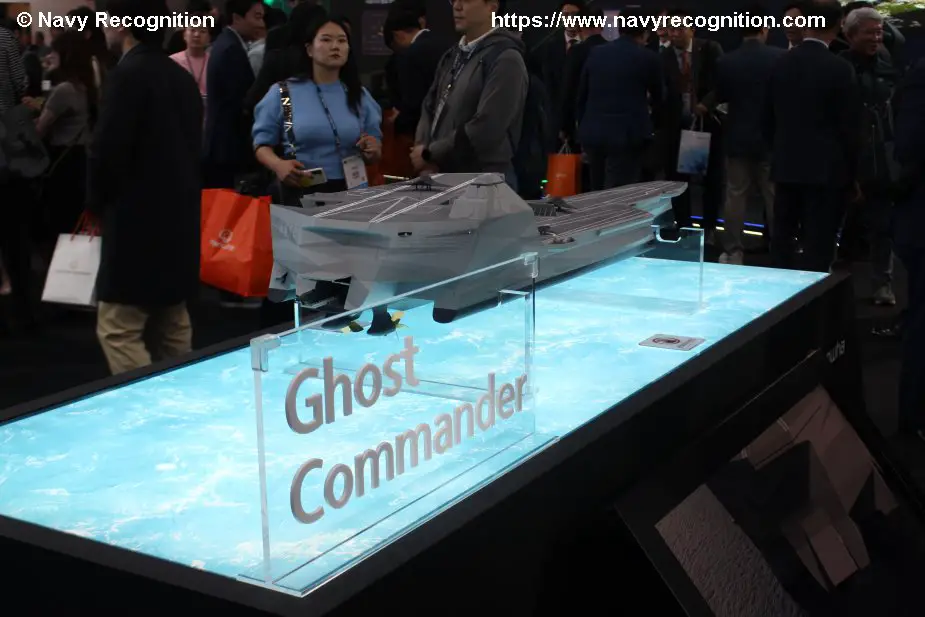Breaking news
Unveiling of Korea's revolutionary Ghost Commander project by Hanwha Ocean.
The Korean company Hanwha Ocean, part of Hanwha has showcased at the occasion of ADEX 2023, an incredible unmanned power command and control ship, the "Ghost Commander" system.
Follow Navy Recognition on Google News at this link
 Unmanned power command and control ship, the Ghost Commander system. (Picture source: Navy Recognition)
Unmanned power command and control ship, the Ghost Commander system. (Picture source: Navy Recognition)
The Ghost Commander project encapsulates three concept models: a 5,000-ton mother ship, a 16,000-ton mother ship, and a 3,000-ton mother submarine. Among these, the 16,000-ton mother ship was displayed at ADEX 2023.
Designed as a forward-thinking initiative, the Ghost Commander project anticipates the escalating needs for unmanned systems and cutting-edge military technologies. The 5,000-ton mother ship is envisioned for the near future, while the other two models cater to a more distant futuristic outlook.
The Ghost Commander's highlight is its unmanned force command and control attribute, marked by a displacement of 16,000 tons, a length of 200 meters, and a speed exceeding 25 knots. The armament comprises a modern high-power laser cannon to counter various threats.
The vessel is designed to host a comprehensive fleet of Unmanned Aerial Vehicles (UAVs), including six fixed-wing aircraft for airstrikes, six for reconnaissance, forty-eight UAVs for attack missions, and another forty-eight dedicated to anti-drone operations.
On the water surface, the Ghost Commander deploys four Unmanned Surface Vehicles (USVs) for reconnaissance and six multi-purpose modular-type USVs, showcasing its modular design. Underneath, eight Unmanned Underwater Vehicles (UUVs) are designated for reconnaissance while three are combat-ready.
A notable feature is the electric catapult system, ensuring short-distance takeoffs for rapid UAV deployment. Central to its operation is an advanced 3D battlefield mapping system offering real-time operational insights, solidifying the Ghost Commander's stance as a novel leader in naval warfare evolution.
Benefits of such a Concept:
The deployment of unmanned systems could lead to lower operational and maintenance costs in the long run, as fewer crew members on board would mean reduced expenses related to life support systems and other human-centric provisions.
Moreover, the continuous operation of unmanned systems could enhance asset utilization and efficiency. The Ghost Commander, with its ability to host and deploy a multitude of unmanned aerial, surface, and underwater vehicles (UAVs, USVs, and UUVs), is poised to significantly bolster surveillance and reconnaissance capabilities.
The multi-purpose modular design of the USVs allows for scalability and flexibility, enabling the deployment of various types of unmanned systems based on mission requirements. This makes the Ghost Commander a versatile asset in a broad spectrum of naval operations.
With the integration of unmanned systems, new warfare capabilities such as swarm drone technology or UUVs with mine-detection and neutralization abilities can be explored and deployed, potentially introducing innovative and game-changing warfare tactics.
Furthermore, hosting unmanned systems on a mothership like the Ghost Commander close to potential areas of operation can significantly reduce reaction times in critical situations, thereby enhancing the effectiveness and success rate of naval missions.




























